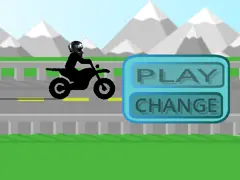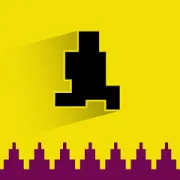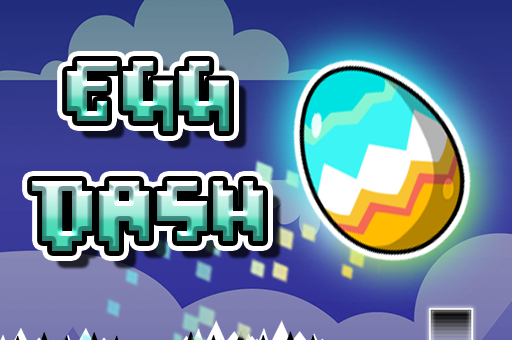Ride the waveform, nail the beat, thread every gap
Keep exploring
Keep the momentum going with more arena racers, action trials, and puzzle standouts.

Wheelie Life 2

Lasso, breed, and expand your ranch

Wheelie Life 3

Play Cat and Granny Right Now — Free in Your Browser

The Captcha Game

Survive the devilish platform gauntlet

Egg Dash – Play Free Easter Rhythm Platformer Online

Play Devil Dash Unblocked in Your Browser

Prove you’re human—one ridiculous task at a time

A sweet, low-stress virtual pet
Feel the pulse, steer the ship
Wave control, distilled for pure flow
Geometry Dash Wave focuses on the most reactive ship mechanic in rhythm action. Press to angle upward, release to dive, and stitch those motions into smooth, musical arcs that keep you inside the corridor. Instead of juggling cubes, pads, and spider snaps, you get one precise input loop built for relentless timing practice. Short stages, fast resets, and crisp feedback make every attempt feel like a clear step forward, whether you’re warming up before a big level or grinding for mastery.
Geometry Dash Wave strips away distractions so you can build the essentials: finger rhythm, visual prediction, and micro-corrections at speed. By syncing motion with the soundtrack, you learn to anticipate spikes and slopes that appear on-beat, letting your hands move as the music guides you. The minimal rules create a surprising depth curve, where a few clean pulses can carry you safely through wide tunnels while advanced lines demand feather-light taps and unwavering focus.
Precision that teaches your hands new habits
Geometry Dash Wave rewards tiny, consistent inputs. The ship accelerates instantly on press and drops the moment you let go, so your altitude is a direct mirror of your touch rhythm. Early routes invite you to carve big, confident zigzags. Later ones ask for split-second flicks that barely nudge the nose, followed by long holds that clear stacked hazards without scraping the ceiling. That contrast trains adaptability—the exact skill that carries over to tougher songs and mixed-mode levels.
Geometry Dash Wave uses readable patterns to help you plan. Slanted corridors telegraph whether you should hold or stutter. Symmetrical valleys hint at equal tap spacing. Tight staircases insist on measured pulses, and sudden shelves force decisive climbs. Because the course communicates so clearly, failure rarely feels random. You see why you clipped a spike, then jump back in with a small adjustment, and those small adjustments accumulate into stable muscle memory.
Practice tools that accelerate improvement
Geometry Dash Wave includes optional checkpoints so you can isolate tricky bars and loop them until the motion feels automatic. Instead of replaying whole segments to reach a single nasty bend, drop a marker, rehearse the exact input cadence, then test the full run. This builds confidence fast and prevents burnout. If you prefer pure runs, skip checkpoints and enjoy the rush of clean, start-to-finish flow.
Geometry Dash Wave offers multiple difficulty tiers that function like a ladder. Gentle openings showcase roomy channels that respond well to broad swoops. Mid tiers tighten clearances and add off-beat hazards that test your ability to break rhythm intentionally. High tiers compress gaps into micro-tunnels that you can only cross by tapping with near-metronomic precision. Moving up and down this ladder is a powerful way to consolidate gains while staying fresh.
Rhythm-first design that sharpens prediction
Geometry Dash Wave leans on pulsing EDM to pace your decision-making. When an obstacle lands on a downbeat, you expect it. When a syncopated spike cuts across a held line, you learn to prepare a corrective flick right before it hits. Over time, the soundtrack becomes a coaching track: beats signal turns, fills warn of turbulence, and drops cue long holds. You’re not just seeing the course; you’re hearing it unfold.
Geometry Dash Wave makes warmups productive. A few short sessions before tackling a demanding demon can stabilize your hands, reduce overcorrections, and keep you in the pocket when stress climbs. Because the control loop is identical to wave segments in full releases, every minute here transfers directly. The result is fewer panic dives, fewer ceiling scrapes, and more confident entries into mixed sections where wave swaps with cube or ball.
Tips that convert retries into progress
Geometry Dash Wave rewards deliberate repetition. Start by tapping to the main beat until you can maintain a stable altitude without swinging too far. Next, practice off-beat pulses: tap slightly ahead of the sound to pre-empt a rising slope, then relax on the beat to settle into a valley. Keep your wrist relaxed and anchor a finger lightly so micro-movements stay consistent. If a bend keeps beating you, drop a checkpoint two seconds before it, drill the exact timing, and then remove the marker to test retention.
Geometry Dash Wave also benefits from visual scanning. Look a fraction ahead of the ship rather than directly at it, letting peripheral vision monitor hitboxes. This makes your taps proactive instead of reactive. Combine that with volume that lets you feel the kick and snare without drowning your focus, and you’ll notice your corrections get smaller and steadier. The game’s short, punchy attempts make it easy to experiment, measure, and lock in whatever works.
Why this mode stays addictive
Geometry Dash Wave compresses the thrill of near misses into a clean control loop. There’s no long wind-up—press play, ride the line, reset in an instant. Each stage becomes a puzzle of timing: how long to hold, when to release, where to sneak a micro-tap, and how to ride a diagonal without oversteering. That puzzle resets quickly enough to keep you curious, and the visible skill ceiling keeps you coming back once you taste a perfect thread through a brutal micro-gap.
Geometry Dash Wave fits any session length. Five minutes is enough to stabilize your cadence and learn a new bend. Twenty minutes lets you step up a tier and re-test your consistency. Longer runs can mix structured drills with free attempts, checkpoints on for learning and off for confidence checks. Because the format is so focused, you always know what you’re training—and why it matters when you switch to larger levels.
From warmup to main event
Geometry Dash Wave can be a pre-level ritual or a standalone challenge. Use it to sharpen before you tackle mixed modes with nasty wave cuts, or treat its top tiers as a personal boss fight that measures pure control. Either way, the skills transfer: steadier taps, cleaner holds, quicker recoveries after a wobble, and calmer decision-making when the beat goes double time. The more you internalize its pulse, the more every other mode feels manageable.
Geometry Dash Wave keeps the feedback loop honest. The ship does exactly what your hands tell it to do, and the corridor tells you instantly whether those commands were right. That clarity is motivating. It turns every mistake into a lesson and every clean line into proof that your method works. When a hard route finally clicks and the soundtrack carries you across the last spike set, the satisfaction lands like a drop you saw coming and still loved.
Geometry Dash Wave is, at heart, a study in control made fun. It invites you to sync touch, sight, and sound until they behave as one. It challenges you to refine that unity against tighter spaces and trickier rhythms. And it rewards the grind with visible, repeatable skill that follows you into the rest of the series. Load it up, lean into the beat, and let the waveform teach your hands the language of clean, confident flight.
Ride the waveform, nail the beat, thread every gap is ready to play
Conquer razor-thin wave corridors. Hold to rise, release to dive, use checkpoints to drill tough turns, and sharpen timing for harder Geometry Dash levels in your browser.
Share Ride the waveform, nail the beat, thread every gap
Spread the word, invite friends, or bookmark this page to revisit the story whenever you need it.